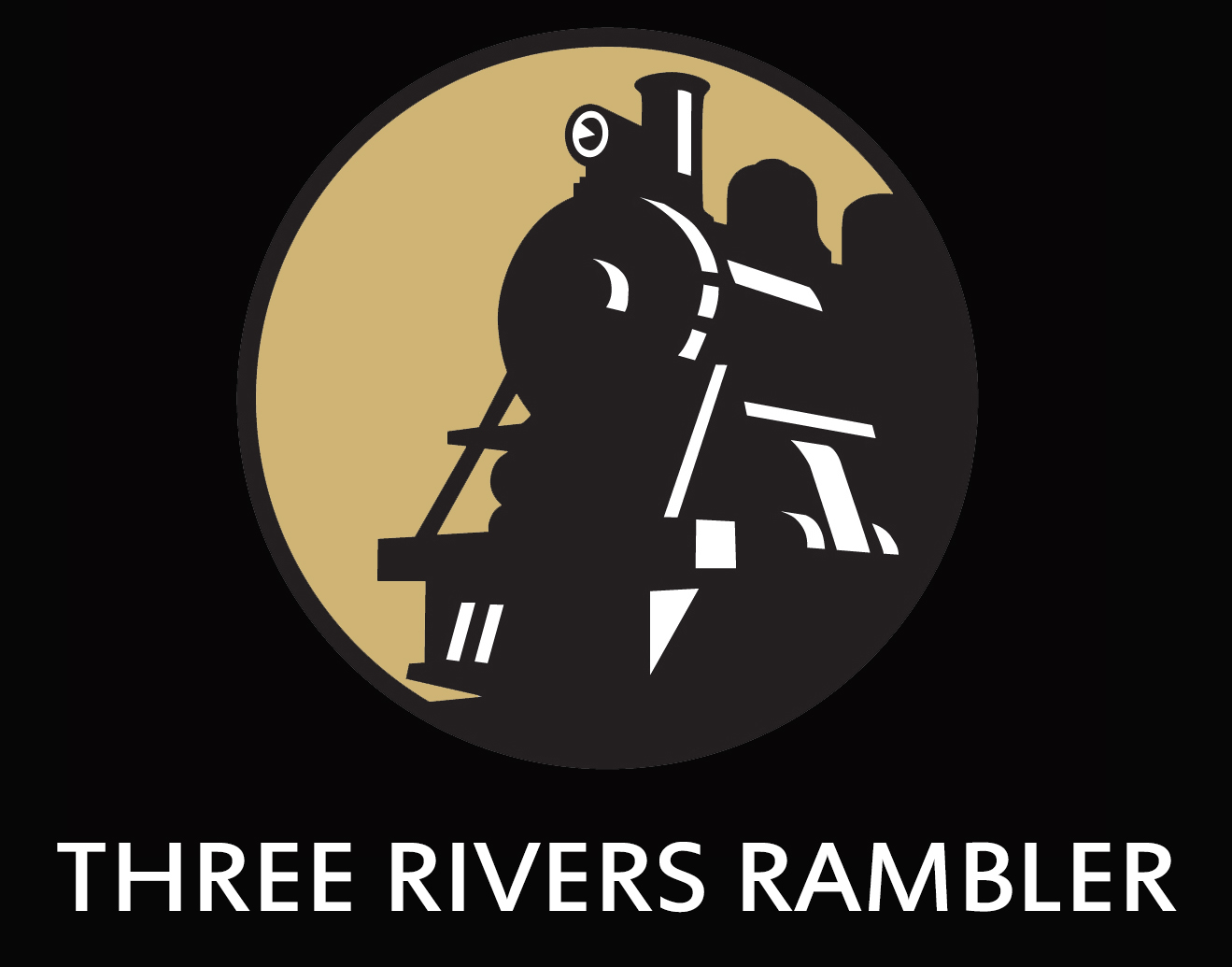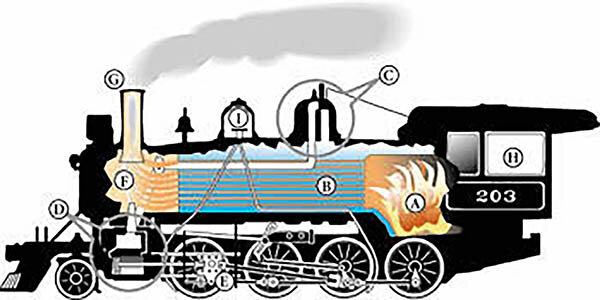How a Steam Engine Works
A. Firebox. This is where the fuel is burned to create heat.
B. Boiler. Lindy uses a fire tube boiler. Hot gases produced in the firebox are pulled through a rack of tubes in the boiler. The tubes heat the water that surrounds them to produce steam. The steam collects in the steam dome on the top of the boiler.
C. Steam Dome. Inside the steam dome are the regulator valve, safety valve, and whistle. The regulator valve is attached to the throttle in the cab. The engineer uses the throttle to control the quantity of steam delivered to the cylinders. The whistle is a four-chime, 1925 Baldwin whistle which blows by the steam pressure.The safety valve opens to release steam when the pressure becomes too high.
D. Valves, Cylinders, and Pistons. The steam is converted to mechanical energy in the cylinders. Steam under pressure is passed through cylinder valves into a chamber and drives the piston. Lindy, like most locomotives, uses double-action cylinders. This achieves twice the power by alternately introducing steam on either side of the piston so the piston rod is both pushed and pulled, generating power on both strokes.
E. Rods. The piston is aligned in the cylinder by a crosshead running on a guide. The crosshead carries the small end of the connecting rod. The other end, the big end, transmits the power to the wheels with the crank pin. Lindy, like most locomotives, has more than one set of driving wheels to share the power generated by the double-action cylinders. Cranks on either side of the locomotive are offset by 90° to spread the power over a complete revolution of the wheels.
F. Smokebox. Spent steam is released from the cylinders through the blast pipe below the stack. This arrangement produces a reduction in pressure in the smokebox which draws the firebox gases through the boiler tubes. The harder the locomotive works,the more gas is drawn through the tubes, generating more steam.
G. The Stack. The spent steam from the blast pipe mixes with the gases from the boiler tubes and exits through the stack. The harder the locomotive works, the more gases and steam comes out the stack.
H. Cab. The train crew operates the engine from the cab. The fireman’s job is to make the steam by controlling the fire in the firebox and the water supply to the boiler. The engineer uses the steam by operating the throttle and monitors the steam pressure, fuel, and water.
I. Sand Dome. Dome contains sand to be utilized by the engineer by spraying in front or behind driving wheels for traction between the wheels and rail.
The History of Steam Locomotives
The steam engine was invented in the late 1700's as part of the foundation of the Industrial Revolution. The first steam locomotive was developed in the early 1800's. The first use was to carry goods on tramways in the place of horses. Over the past 200 years, the principle of how a steam engine works has remained the same.
Lindy is a 2-8-0 consolidation type steam engine from the Baldwin Locomotive Works. The consolidation type, particularly useful for heavy freight service, has four pairs of driving wheels and a two-wheeled front truck. The driving wheels carry a large percentage of the weight of the locomotive for greater traction. Distributing the weight over four pairs of wheels reduces the load on each pair. The front and rear wheel pairs are flanged and the intermediate pairs are plain or flanged, based on their service requirements. The front truck has a swinging bolster and radius bar. Typically a long fire-box is placed over the rear pair of driving wheels.
A steam engine requires a combustible fuel and a supply of water. On most steam locomotives the fuel and water are carried in a separate car, the tender, behind the locomotive. Usually the tender is semi-permanently coupled to the engine. Lindy’s tender, which originally carried coal as the fuel, has been converted to carry oil. Using oil reduces the soot and cinders that is caused by coal.
The cylinder valve opens to release steam exhaust. The steam escapes under a great deal of pressure and makes the familiar “choo” sound associated with steam engines. As the piston gains speed, the “choo” sound repeats faster and faster, creating the often quoted, “I think I can, I think I can” sounds.


